VocoPro SilentPA-RX Owner's manual
- Category
- Musical Equipment
- Type
- Owner's manual
This manual is also suitable for
VocoPro SilentPA-RX is a wireless audio broadcast system, comprising a stationary transmitter, a bodypack transmitter, and a bodypack receiver. The system can be used in various settings, including classrooms, meeting rooms, and tour groups. It enables the user to transmit audio signals from a variety of sources, such as microphones, CD/MP3 players, and computers, to multiple listeners wearing the bodypack receivers. The system offers clear and reliable sound transmission, and is easy to set up and use.
VocoPro SilentPA-RX is a wireless audio broadcast system, comprising a stationary transmitter, a bodypack transmitter, and a bodypack receiver. The system can be used in various settings, including classrooms, meeting rooms, and tour groups. It enables the user to transmit audio signals from a variety of sources, such as microphones, CD/MP3 players, and computers, to multiple listeners wearing the bodypack receivers. The system offers clear and reliable sound transmission, and is easy to set up and use.




















-
 1
1
-
 2
2
-
 3
3
-
 4
4
-
 5
5
-
 6
6
-
 7
7
-
 8
8
-
 9
9
-
 10
10
-
 11
11
-
 12
12
-
 13
13
-
 14
14
-
 15
15
-
 16
16
-
 17
17
-
 18
18
-
 19
19
-
 20
20
VocoPro SilentPA-RX Owner's manual
- Category
- Musical Equipment
- Type
- Owner's manual
- This manual is also suitable for
VocoPro SilentPA-RX is a wireless audio broadcast system, comprising a stationary transmitter, a bodypack transmitter, and a bodypack receiver. The system can be used in various settings, including classrooms, meeting rooms, and tour groups. It enables the user to transmit audio signals from a variety of sources, such as microphones, CD/MP3 players, and computers, to multiple listeners wearing the bodypack receivers. The system offers clear and reliable sound transmission, and is easy to set up and use.
Ask a question and I''ll find the answer in the document
Finding information in a document is now easier with AI
Related papers
-
VocoPro VHF-2000 Owner's manual
-
VocoPro SmartTVOke Owner's manual
-
VocoPro VHF-4000 Owner's manual
-
VocoPro TabletOke-Stage Owner's manual
-
VocoPro Digital-Conference-36-Extend Owner's manual
-
VocoPro AIR-NET II Operating instructions
-
VocoPro Digital-Quad-Conference Owner's manual
-
VocoPro MOBILEMAN BT Owner's manual
-
VocoPro Karaoke-Thunder-1500 Owner's manual
-
VocoPro VOICECASTER Operating instructions
Other documents
-
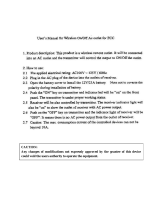 Jasco Products NHS-PT456 User manual
Jasco Products NHS-PT456 User manual
-
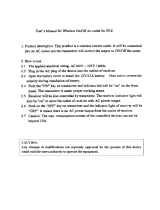 Jasco Products NHS-TX01A User manual
Jasco Products NHS-TX01A User manual
-
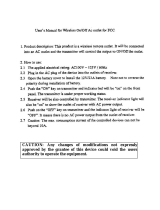 Powertech Industrial NHSPT-458 User manual
Powertech Industrial NHSPT-458 User manual
-
Pyle PMNP2S Owner's manual
-
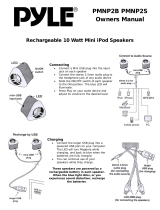 PYLE Audio PMNP2S User manual
PYLE Audio PMNP2S User manual
-
Klip Xtreme KSS-600 Datasheet
-
CableWholesale 30MC-03100 Datasheet
-
AKG MPAVL Operating instructions
-
 Martin Ranger U-6800R User manual
Martin Ranger U-6800R User manual
-
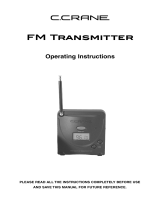 C. Crane D483 User manual
C. Crane D483 User manual

























